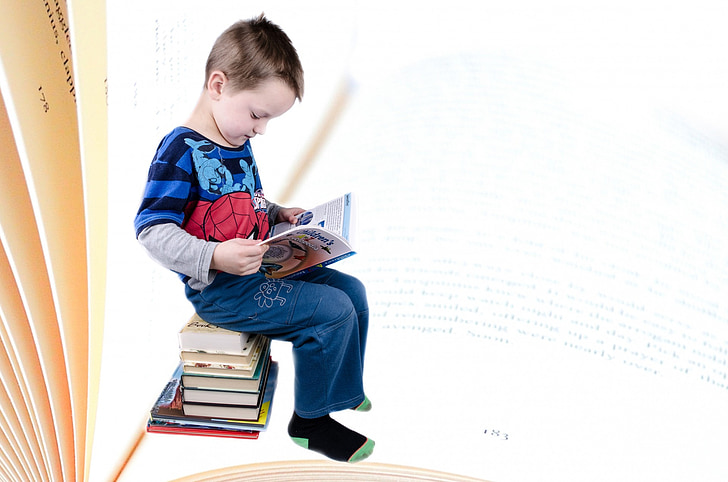Many children love stories. For many, stories are a favorite toy. Even before they understand anything, children enjoy turning the pages, looking at the illustrations and sailing into this wonderful world of imagination. Stories are a tool for developing closeness and connection, a means of comfort and security, a tool for developing trust between an adult and a child, but also a tool that enables an adult to get to know the child’s world. Stories are also important for the development of speech, perception, attention and concentration. Stories teach children the rules of behavior, solidarity, tolerance, conflict resolution, enrich their vocabulary, strengthen their sense of justice and develop critical thinking. However, it doesn’t end there. Stories have numerous psychological benefits for children – they contribute to the development of self-confidence, promote learning and memory, develop communication skills, encourage the development of imagination and creativity, enable familiarity, recognition and dealing with emotions. In addition, stories allow children to understand their own negative experiences and create connections through sharing their experiences with others (Ortner, 2007).

Numerous scientific studies have shown that reading to a child from an early age is just as important for their development as it is for fulfilling their basic needs, the need for food, rest, love, play, health and safety. (Radonić and Stričević, 2009, according to Pandurić, 2019). Since reading is not an innate skill and must be learned, it is very important to encourage children to read from an early age. Students of younger school age are still in the playing phase and it is easiest to encourage and motivate them through play. In this way, it is possible to access the reading material, and encourage them to read and talk about it through the game (Pandurić, 2019).
In addition to paper forms, books can also be found in digital forms. Nowadays, e-books are used more and more because of their practicality of use. They can be read on mobile devices, computers, e-readers or tablets anywhere, anytime, and can be printed on a computer at home. (Dumančić and Gregurić, 2017, according to Valenta, 2018). Learning in the traditional way with printed textbooks leads to boredom and needs and interests are neglected. Therefore, by introducing e-books, we get individualization and greater student interest in the teaching content (Valenta, 2018). The advantages that e-books bring are numerous, one of the most important is the availability of the e-book 24 hours a day, regardless of where the user is. We mostly buy them, but we can also download them for free from the Internet or create them independently with the help of various programs or applications (such as Pubcoder ili Book Creator). An additional advantage of independent creation of books or stories is their personalization, that is, the possibility to incorporate elements (such as characters, activities, animations, etc.) into the book or story that will help us achieve educational goals or outcomes. In addition to audio, e-books can contain short films and animations. This makes them more interesting and attractive, both for children and young people, as well as for adults.

One special subtype of books or stories are social stories, which can also be created in e-format. These are short stories, written and adapted for children with an autism spectrum disorder whose aim is to improve children’s social and/or communication skills by teaching appropriate forms of behavior in social situations, but they can also be used for other students (e.g. students who have problems in behavior or low self-esteem). Social stories describe a concrete situation by interpreting relevant social signals, the perspective of others, and often suggest an appropriate response to behavior in a certain situation (Reynhout and Carter, 2007, according to Jančec, Šimleša and Frey Škrinjar, 2016). In this way, they help overcome difficulties in theory of mind, that is, difficulties in understanding the opinions, wishes and intentions of others, characteristic of children with high-functioning autism (Baron Cohen, 2010 according to Jančec et al., 2016). Every social story has a clearly defined structure: it answers questions about a person (Who?), an object or event (What?), a place (Where?) and external and internal motives for behavior (Why?) in certain, specific situations, explains attitudes and emotions of others, describes what a child is expected to do or say in a specific situation. It also provides the child with an explanation of the social acceptability of the taught behavior (Jančec i sur., 2016).
Bibliography
- Jančec, M., Šimleša, S. i Frey Škrinjar, J. (2016). Poticanje socijalne interakcije putem socijalnih priča u dječaka s poremećajem iz spektra autizma. Hrvatska revija za rehabilitacijska istraživanja, 52 (1), 87-99. https://doi.org/10.31299/hrri.52.1.8
- Keča, M. (2012). E-knjiga — najnoviji oblik knjige. Knjižničar/Knjižničarka, 3. (3.), 13-24. Preuzeto s https://hrcak.srce.hr/233323
- Ortner, G. (2007). Bajke koje pomažu djeci. Zagreb: Mozaik knjiga.
- Pandurić, E. (2019). Utjecaj čitalačkih navika na razvoj čitalačke motivacije djece rane školske dobi (Diplomski rad). Osijek: Sveučilište Josipa Jurja Strossmayera u Osijeku, Fakultet za odgojne i obrazovne znanosti. Preuzeto s https://urn.nsk.hr/urn:nbn:hr:141:860197
- Valenta, A. (2018). Upotreba multimedijskog e-udžbenika u nastavi (Diplomski rad). Zagreb: Sveučilište u Zagrebu, Učiteljski fakultet. Preuzeto s https://urn.nsk.hr/urn:nbn:hr:147:367028
